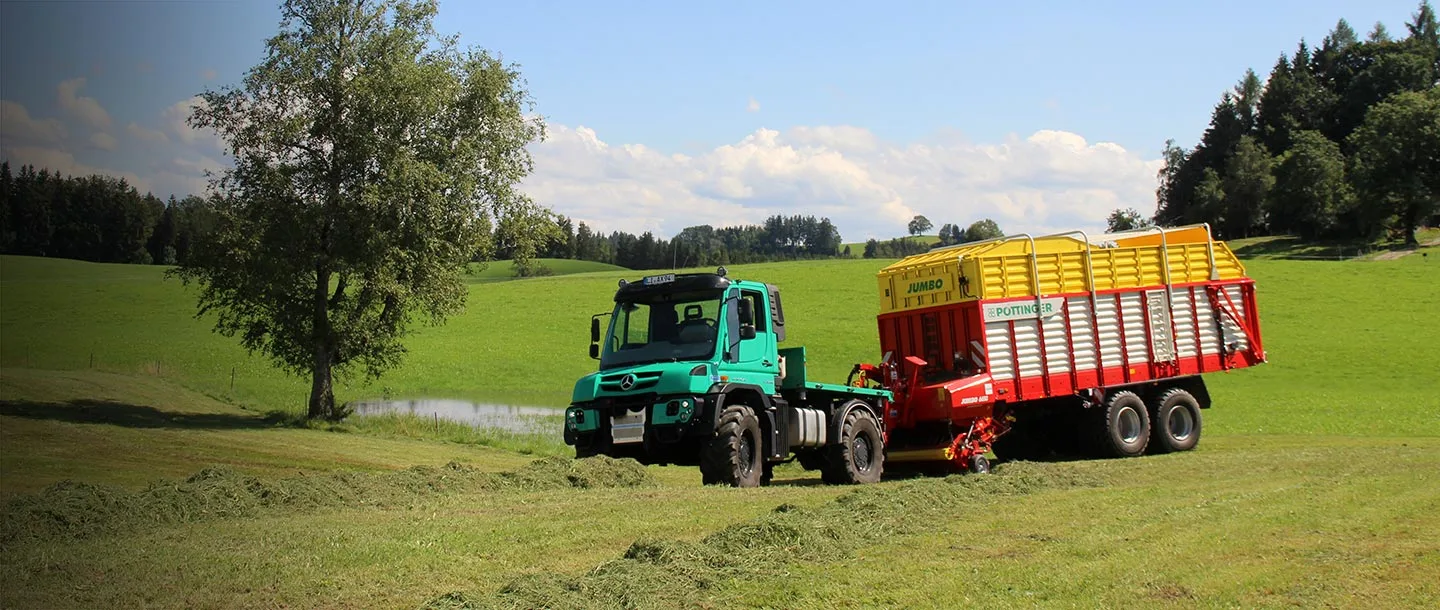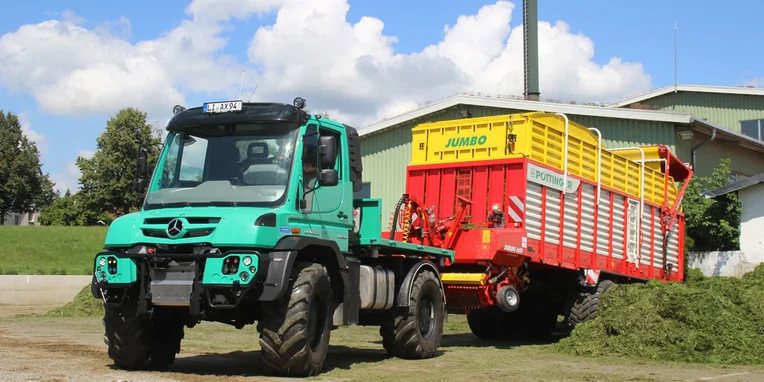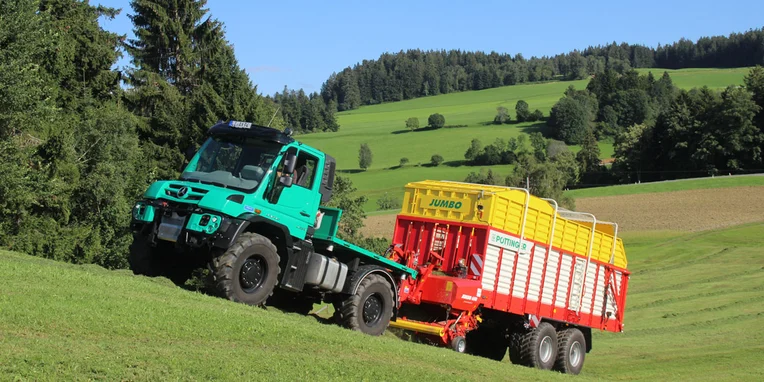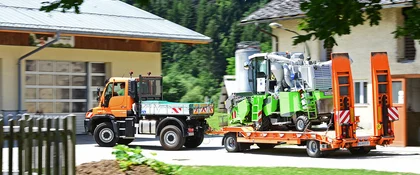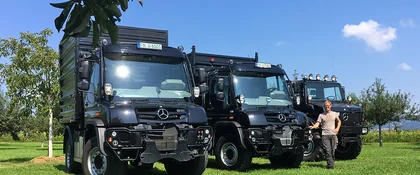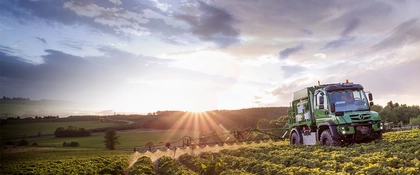Fodder production with Unimog support.
A year’s testing of the Unimog U 529. That means, for RegioGras eG from Hergatz in the rural borough of Lindau: around 1000 operating hours and about 35,000 kilometres on the clock. The verdict: "No other tractor comes anywhere near its fuel consumption. The Unimog has by far the lowest consumption," says Managing Director Toni Eller. In the past, the cooperative with 830 members which specialises in drying grass and maize has already used Unimog. They were called 2100 and 2400 back then.
We’ve got through about twelve Unimog
Toni Eller, Managing Director, RegioGras eG
Green fingers, a green Unimog.
It was just time for the comrades from the Allgäu to buy another, modern, Unimog. And so that it would suit the requirements of the producers of dairy cattle quality fodder, all sorts of special equipment were ordered for it from Unimog general distributor Knoblauch-Wohlgschaft in Wangen: 495 tyres, tyre pressure control system, K80 trailer coupling, additional headlamps and a camera at the rear. There was a Bluetooth radio for the driver on top.
The season for the 529 is from April to November. "Then it's taken off the road," says Toni Eller. Because his new Unimog only has one task: to drive. The cooperative offers those of its members who have to travel long distances to the drying plant the optional service of travelling to them with the Unimog, loading the grass and taking it to the plant. The Unimog U 529 travels quickly at a speed of 90 km/h and easily tows the Pöttinger jumbo loading trailer with 40 cubic metres capacity.
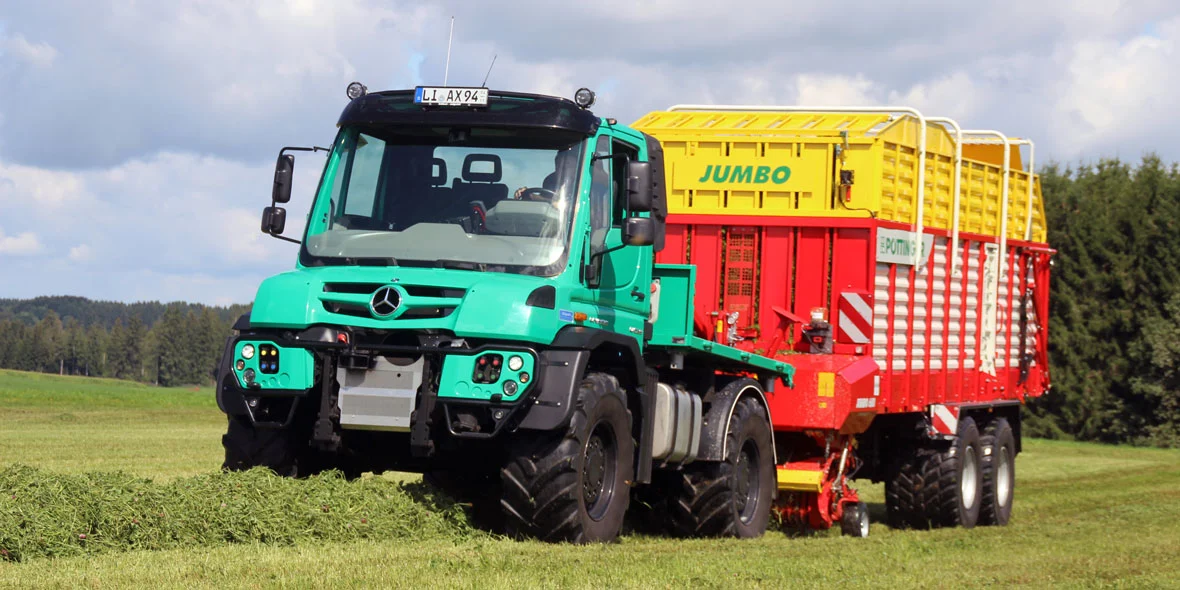
Travelling on fields and roads.
The equipment of the agricultural implement carriers is functional and leaves nothing to be desired. On-board, drivers will find everything they need for working in the fields and driving on roads: high-traction tyres, agricultural platform body, coupling jaw, hydraulic system for trailers and a neatly equipped cab with air conditioning and a "particularly comfortable seat", as Marius Vaske emphasises. And that's important as the Unimog vehicles are used in transport logistics. Sometimes they can travel up to 50 kilometres from the company premises to the field and back.
"We upgrade our customers’ cream of the crop," explains Toni Eller, referring to green cuttings. This valuable grass is processed into so-called cobs at the plant in Hergatz. Grass cobs have for years been successfully fed to ruminants, in particular cows, but also to horses and goats. In this way, on the one hand the output from dairy cows can be considerably increased by means of the basic fodder, and on the other the amount of additional fodder bought can be reduced.
Good things from the Allgäu.
"Throughout the EU, approx. 70 % of protein in fodder is imported," is the message from RegioGras eG. Their grass cobs consist of grass from neighbouring meadows in the three-country region, dried in hot air and pressed into pellets. Thanks to the quick drying method and the economical process, all important nutrients (vitamins and minerals) are preserved and the protein structure is transformed into rumen-stable "protected" protein by means of thermic treatment.
Roughly 40 such plants operate in Germany, mostly in southern Germany. 140,000 tonnes of meadow grass and maize cobs are processed and marketed annually by the Allgäu cooperative.
